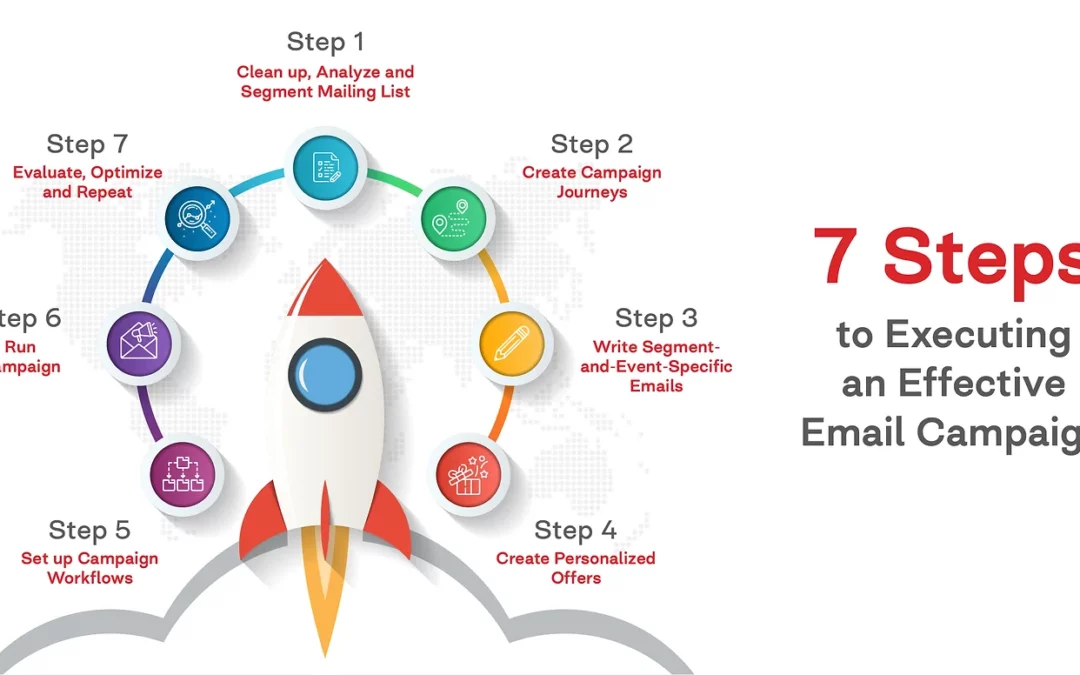We know email and SMS is a big part of your ecommerce marketing strategy. That’s why we came up with this blog to help you execute an effective email campaign. This is by no means an exhaustive list. But it covers all the essential parts of designing an email campaign that gives you good results. If you follow these 7 steps, you should create an email marketing strategy that can be run and repeated successfully.
Step 1: Clean up, Analyze and Segment Mailing Lists
Clean your mailing list to ensure that your emails reach each of your customer’s inbox. This involves removing email addresses that are defunct and of customers who have unsubscribed. A clean mailing list results in maximum conversion rates. It will also help you generate analytics and reports that are accurate.
Once you have a clean email list, you need to segment them based on different key criteria. For example, segmenting customers as loyal, passive and at-risk will help you design different campaign journeys for each of them.
So, the second part of Step 1 is to analyze and segregate your mailing list according to your customer segments.
Step 2: Create Campaign Journeys
A customer’s campaign journey takes them through the following stages – awareness, consideration, acquisition, retention and advocacy. Plan your automated campaigns as per the stage and engage with them at every touch point.
Visualize different campaign journeys and create separate workflows for each of them. Your campaign must have different trigger and event specific journeys that drive your audience through different stages of a purchase.
Step 3: Write Segment-and-Event Specific Emails
The next step is quite the essence of your campaign. The content of your email under each segment and each event must be differentiated towards its corresponding audience. Well-written emails with an appropriate promo offer will establish the best opportunity for your recipient to turn into a customer.
For example, you can isolate all customers who bought a couples’ watch set in the last 365 days and send them personalized offers for Valentine’s Day. By studying what your customers have purchased in the past, you can come up with offers that will result in a purchase in the present.
Step 4: Create Personalized Offers
Your customers are more likely to respond positively to your campaign only if the offer they receive resonates with them. Creating personalized offers begins with studying your customer’s past purchase history, demographics and psychographic.
You could also differentiate offers based on your customer type. Among loyal, passive and at-risk customers, personalizing an offer for each type of customer will result in a sale. For example, you could offer a Buy 1 Get 1 Free offer for an at-risk Customer and a Free Shipping offer for a loyal customer, thus making sure both of them make a purchase.
Step 5: Set up Campaign Workflows
Setting up campaign workflows involves identifying different trigger and event actions for the whole campaign. It is a simple if-this-then-that flowchart, which works seamlessly based on different customer actions in response to your emails.
Use a marketing automation tool to set up automated campaign workflows using the segments and the emails created. Make sure that the workflows are set up accurately. If possible, run a demo with internal email accounts before you set it up for your customers.
Step 6: Run Campaign
Activate your campaign and run it for a designated time-period. Make sure your emails are sent at an optimal time and with appropriate time gaps.
Step 7: Evaluate, Optimize and Repeat
This is the most important step in the list. You may have gotten most things right. But you can still execute a better campaign the next time. Once the campaign has ended you go back to the drawing board. You start from scratch and redesign your campaign again.
Take a hard look at your dashboard. Evaluate the analytics, reorganize the campaign strategy, and repeat the campaign with optimized emails and workflows. If prospects aren’t opening your emails, evaluate your subject lines and change them. Make sure you refrain from using SPAM words in your subject lines.
With every repetition of your campaign, make adjustments to optimize results. With enough practice and experience, you will be sending out email campaigns that are highly effective.
Well, these were 7 steps to executing an effective email campaign.
Also read: 10 Ways to Avoid Sending Spam Emails
Have a question or comment? Write to us at cs@qubriux.com.

